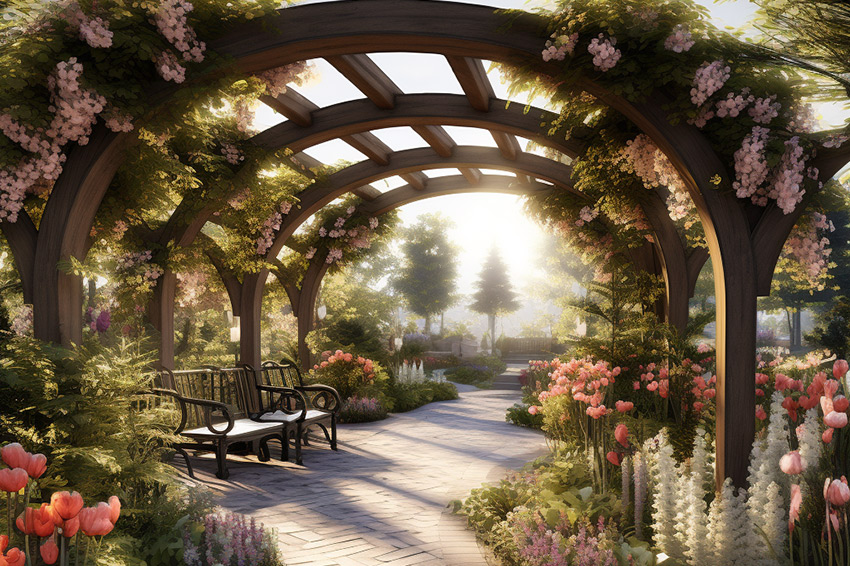Have you ever wondered how landscape architects create stunning outdoor living spaces that look beautiful and serve a purpose? The art of landscape architecture is a delicate balance between aesthetics and functionality, where form meets function in harmony. From designing parks and gardens to transforming urban spaces, landscape architects have the unique ability to shape our surroundings in a way that enhances our quality of life. This article will explore landscape architects’ principles and techniques to blend aesthetics with functionality and discover how these innovative approaches can transform ordinary spaces into extraordinary ones. So, let’s dive into landscape architecture and uncover the secrets behind its captivating artistry.
The Importance of Aesthetics in Landscape Architecture
Regarding landscape architecture, aesthetics are crucial in creating visually stunning and functional outdoor spaces. Every element, from the choice of plants and materials to the arrangement of structures, must be carefully considered to achieve a harmonious and captivating design. Aesthetics in landscape architecture go beyond mere beauty; they can evoke emotions, create a sense of place, and enhance the overall experience of the space. By blending innovative design principles with artistic vision, landscape architects can transform ordinary landscapes into extraordinary works of art. Using color, texture, and form, combined with strategic placement and arrangement, can create dynamic and engaging outdoor environments that inspire and delight. In this way, aesthetics becomes the language through which the landscape architect tells a story and invites the viewers to immerse themselves in a world of beauty and innovation.
Principles of Functional Design in Outdoor Spaces
To create functional outdoor living spaces, landscape architects employ principles that prioritize usability and efficiency while maintaining aesthetic appeal. These principles guide the design process, ensuring that the outdoor spaces are visually pleasing and serve a purpose. One such principle is the concept of zoning, which involves dividing the outdoor space into distinct areas based on their function. For example, a seating area may be separated from a play area to create a sense of privacy and avoid potential conflicts. Another principle is circulation, which focuses on creating efficient pathways that allow easy movement throughout the space. This includes considering the natural flow of foot traffic and providing clear and accessible routes. Additionally, landscape architects consider the maintenance and sustainability of the outdoor space, incorporating elements such as low-maintenance plants and efficient irrigation systems. By adhering to these principles, landscape architects can create outdoor spaces that look beautiful and function effectively and efficiently.
Balancing Nature and Functionality in Landscape Design
Achieving a harmonious balance between the natural environment and the functional aspects of landscape design requires careful consideration and thoughtful integration of both elements. More is needed to create a visually appealing outdoor space and serve a functional purpose. This delicate balance is achieved through the strategic placement of components that seamlessly blend with the natural surroundings while fulfilling the practical needs of the space. For example, a beautifully designed seating area can be integrated into a garden, providing a comfortable place to sit and enjoy the surroundings and a functional gathering space for social interactions. Similarly, pathways can be designed to guide people through the landscape and highlight and enhance the site’s natural features. By striking this balance, landscape architects can create outdoor spaces that are visually stunning, highly functional, and innovative.
Innovative Techniques for Blending Beauty and Usefulness
By integrating cutting-edge design techniques with practical functionality, landscape architects can blend beauty and usefulness in innovative ways seamlessly. One such technique is the use of green roofs, which provide a visually striking element to a landscape and offer a range of functional benefits. Green roofs can help regulate temperature, reduce stormwater runoff, and improve air quality. Another innovative technique is the integration of renewable energy sources, such as solar panels, into landscape designs. These panels can provide power for lighting, irrigation systems, and even charging stations for electric vehicles.
Additionally, landscape architects are embracing the concept of edible landscapes, where both aesthetically pleasing and edible plants are incorporated into the design. This not only adds visual interest but also promotes sustainability and self-sufficiency. Through these and other innovative techniques, landscape architects are redefining the traditional notion of beauty in landscapes, creating spaces that are not only visually appealing but also highly functional and sustainable.
Conclusion
Blending aesthetics and functionality has revealed a world where beauty and purpose coexist harmoniously. From design principles to innovative techniques, landscape architects have transformed spaces into captivating masterpieces. As you step outside, you cannot help but imagine the possibilities ahead, where landscapes become living works of art, inviting you to explore and experience their magic.


